“So, what do you do?”
This question tends to elicit dread in the hearts of many professionals, especially modern tech workers and entrepreneurs who do a lot of different things, making it hard to sum up succinctly.
But a quick and compelling personal branding statement is important for more than networking conversations these days. It’s an integral part of any personal website. It’s what you’ll stick in the bio section of your social profiles. You’ll want it on hand as you build thought leadership, to share as your “about you” info when you’re writing articles online or speaking at conferences or on podcasts. It may be useful in the summary section of a resume to tie together diverse professional experience.
This short teaser is how so many people around the web will be introduced to you and your work, so it’s important to get it right. But it can feel near impossible to summarize all the aspects of yourself in just a few sentences (or even just a few words!).
To help you write a strong personal branding statement, Polywork chatted with Candice Smith, founder and CEO of French Press Public Relations, about the process she guides her founder clients through to summarize what, exactly, it is that they do.
What is a personal branding statement?
According to Smith, a personal branding statement distills a highlight reel of your work and passions into something succinct, to give people a sense of who you are without having to tell your entire story. “They give you just a snippet of information—enough so that the person who may be running across your profile knows that they want to learn more,” she explains.
You’ll typically want to have multiple versions of a personal branding statement on hand for multiple purposes, she says: a longer personal branding statement to live in places like your “about me” page, a shorter bio version, and then a headline version.

Finally, Smith says to remember that a personal branding statement is not just a list of accomplishments. “Don’t treat a personal branding statement like your resume. Treat it like an opportunity to get to know you a little bit better, so don’t be afraid to insert some personality in there,” Smith says.
How to write a personal branding statement
Step 1: Get every aspect of what you do written out
“The difficulty that most people find when they get started is that every part of their story feels important to them, because it’s their story,” says Smith.
To help clear all of this out of your head, she recommends starting by getting all of the information about yourself and your work down on paper. “It’s okay to start with more because you're going to pare it down to less,” she says.
Some questions she likes to ask her clients to help hone in on their personal branding statement include:
- What is your mission or North Star in your work?
- What were some pivotal moments in your journey that impacted where you are today?
- How would you like the world to remember you?
- Who are the types of people you work with, and why?
- What is your unique methodology or way of approaching your work?
- When you’re explaining what you do to people, what gets them really excited?
- What results do you get in the work that you do?
- Any particularly impressive accomplishments you want to make sure people know about?
Step 2: Work from longest to shortest
With everything laid out in front of you, it’s time to start narrowing it down to what you’ll include in your personal branding statement.
One thing Smith likes to have her clients do at this point is think about what their “unique intellectual real estate” is: What are the things on this list that can help them stand out from other people in their industry. With that in mind, start with your longest personal branding statement, so you can gradually hone your messaging in.
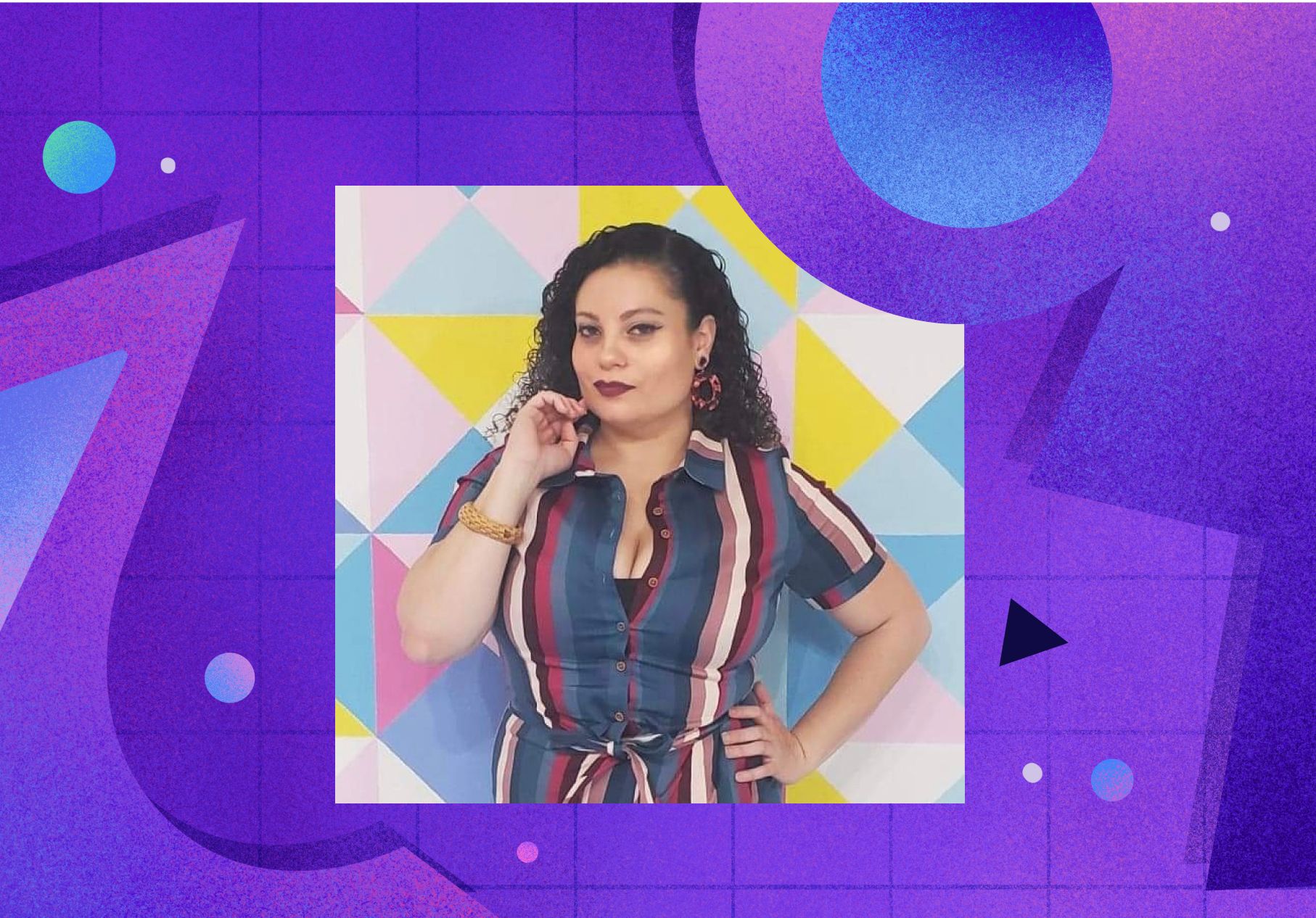
In your long personal branding statement (~200-300 words), Smith says you may want to include things like a bit of your backstory, the type of work you’re doing now, and the “why” behind the work that you do. “You also have some space in that description to include some of your wins or highlights,” she adds.
When you’re paring it down to a short personal branding statement (~50-100 words), you want to get even more focused on your unique value proposition, who you work with, and how you get results for them.
What are your differentiators and what is that value that you are bringing? You don't always have to include a traditional title in order to get the point across.
Finally, taking that down to a personal branding statement headline (14-words or fewer) involves really focusing on the impact you have on people or the world, and often requires getting creative with your language. Smith often says people need to step away from the job title at this point, especially if you’re a multi-hyphenate person and don’t want to list out a bunch of different roles. “Let’s say I’m a copywriter, I’ve founded multiple businesses, I work on visibility and branding strategies and that sort of thing,” says Smith. “I don’t want to say all of that in a headline, but I might say that I’m an ‘award-winning visibility sherpa for early-stage startups.’”
“What are your differentiators and what is that value that you are bringing? You don't always have to include a traditional title in order to get the point across,” she explains.
Step 3: Pull in some reinforcements
Anytime you’re feeling stuck during this process, it can be helpful to call in a second (or third, or fourth) opinion on how to best describe yourself.
If you have the money, one option is to hire a publicist, copywriter, or other comms professional who’s whole job is helping people talk about their work. But there are more affordable ways to get help if you’re DIY-ing your personal branding statement.
For instance, Smith suggests that you could ask colleagues, mentors, past clients, and even friends how they would describe you and your work. (If you already have existing testimonials, those can also be a great jumping-off point.) This can give you insight into the impact you have on other people.

Smith also said AI can be a collaborator in writing your personal branding statement. “Let's say you've made a voice memo telling your whole story, and then you have a transcription of it, or you have bullet points about all the aspects of your work. Feed that into ChatGPT and say, ‘Please give me a 10-word, 100-word, and 200-word version of a personal branding statement,’” explains Smith, who emphasizes that you should use the output as inspiration and not as something to immediately copy and paste onto your public profiles.
Finally, once you land on a personal branding statement you feel happy with, Smith recommends sending it to a number of people in different capacities in your life for feedback on whether it’s clear and compelling.
Personal branding statement examples
If you’re still feeling stuck, look at some examples of personal branding statements from your peers, and use their structure as a starting point to add your own information. Here are five great personal branding statement examples, with some templates to try for yourself.
1. Erin Mikail Staples
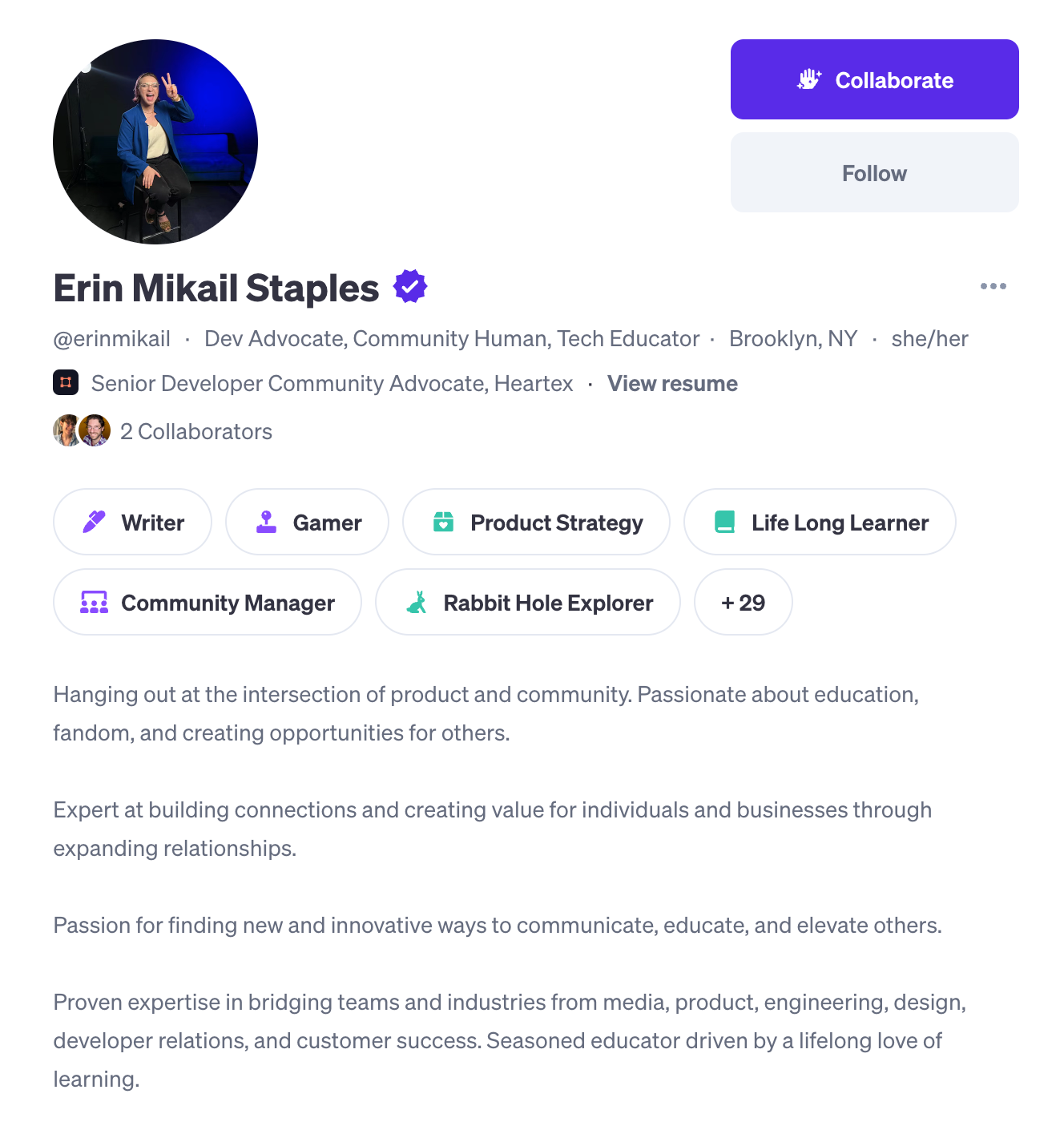
Hanging out at the intersection of [industry] and [industry]. Passionate about [topics or impact goals]. Expert at [value you bring to others in your work].
2. Katy Andrews
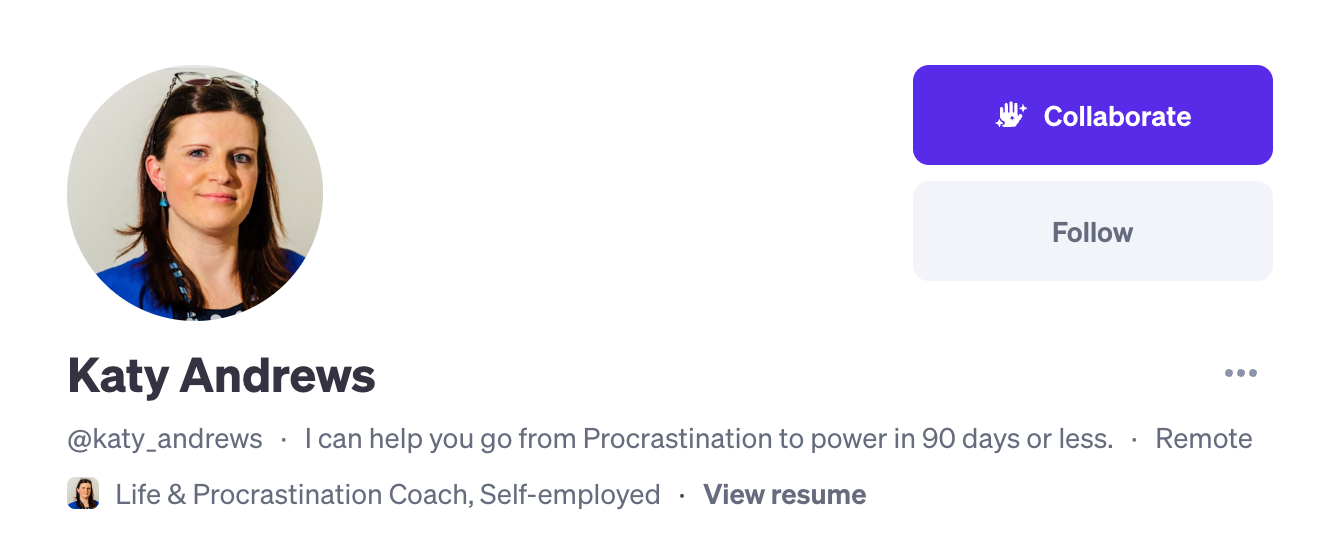
I can help you [impact you have on others] in [time period].
3. Victor Ogunbiyi
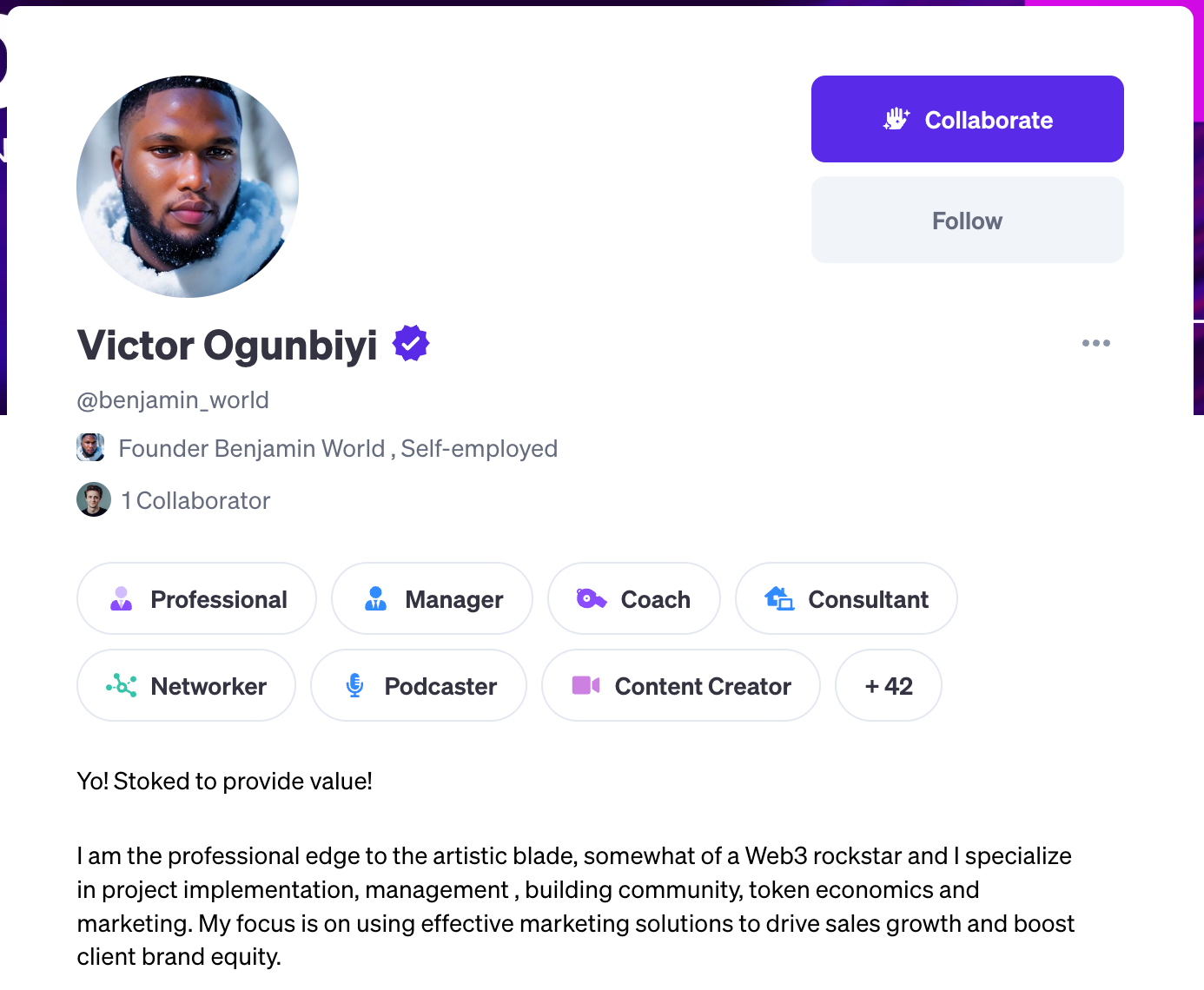
I am [creative description of what you do, staying away from traditional job titles]. I specialize in [specific skills or knowledge you bring to the table]. My focus is on [impact or results you bring with your work].
4. Ashley Abramson
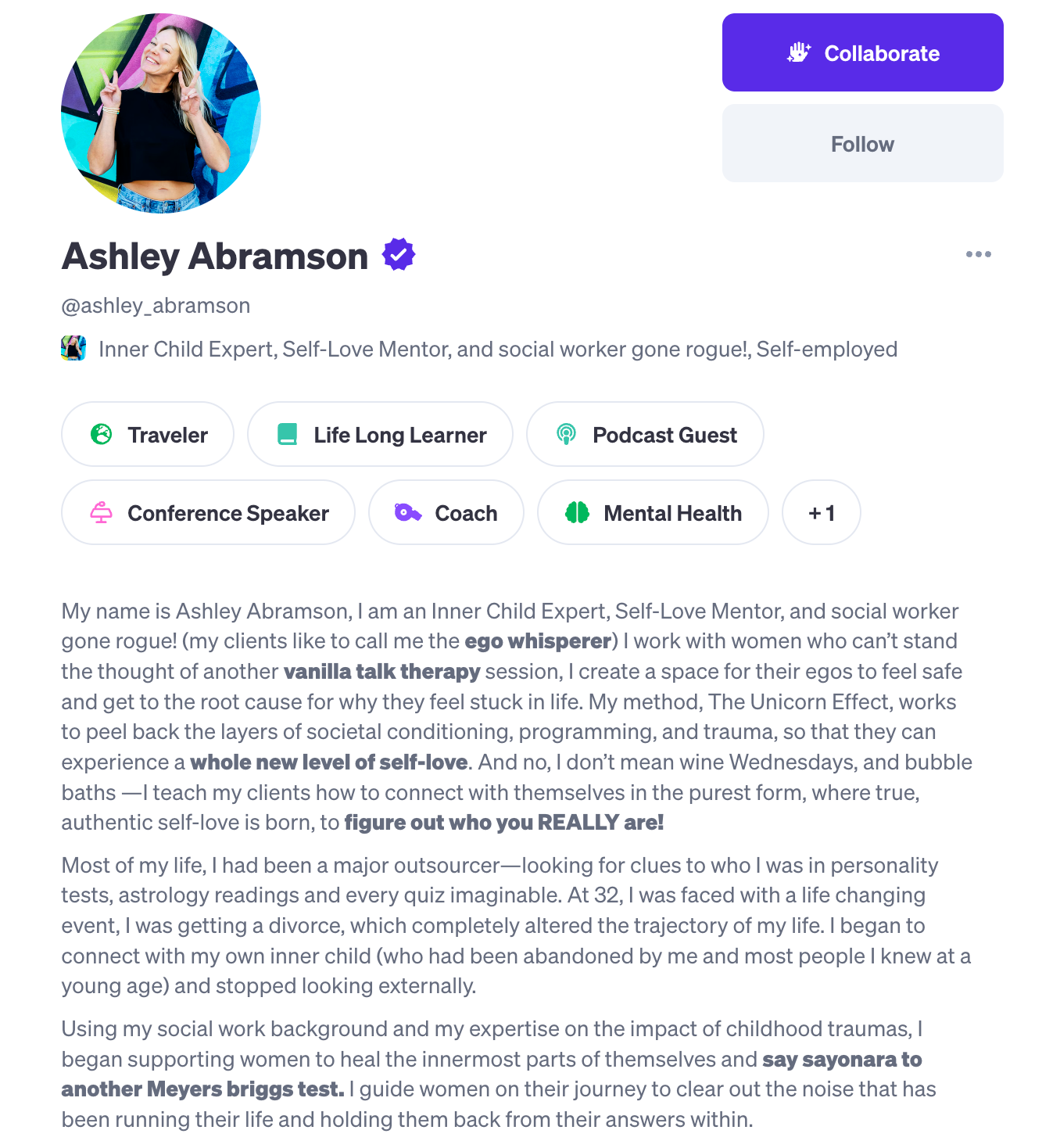
I am [creative title for what you do]. I work with [description of who you support] helping them [what you do for those people]. My unique method is [description of how you approach this work differently].
[Short description of your path to this point.]
Using my background in [the skills / expertise you bring to the table], I [reminder of the impact you have with your work].
5. Justyna McCaig
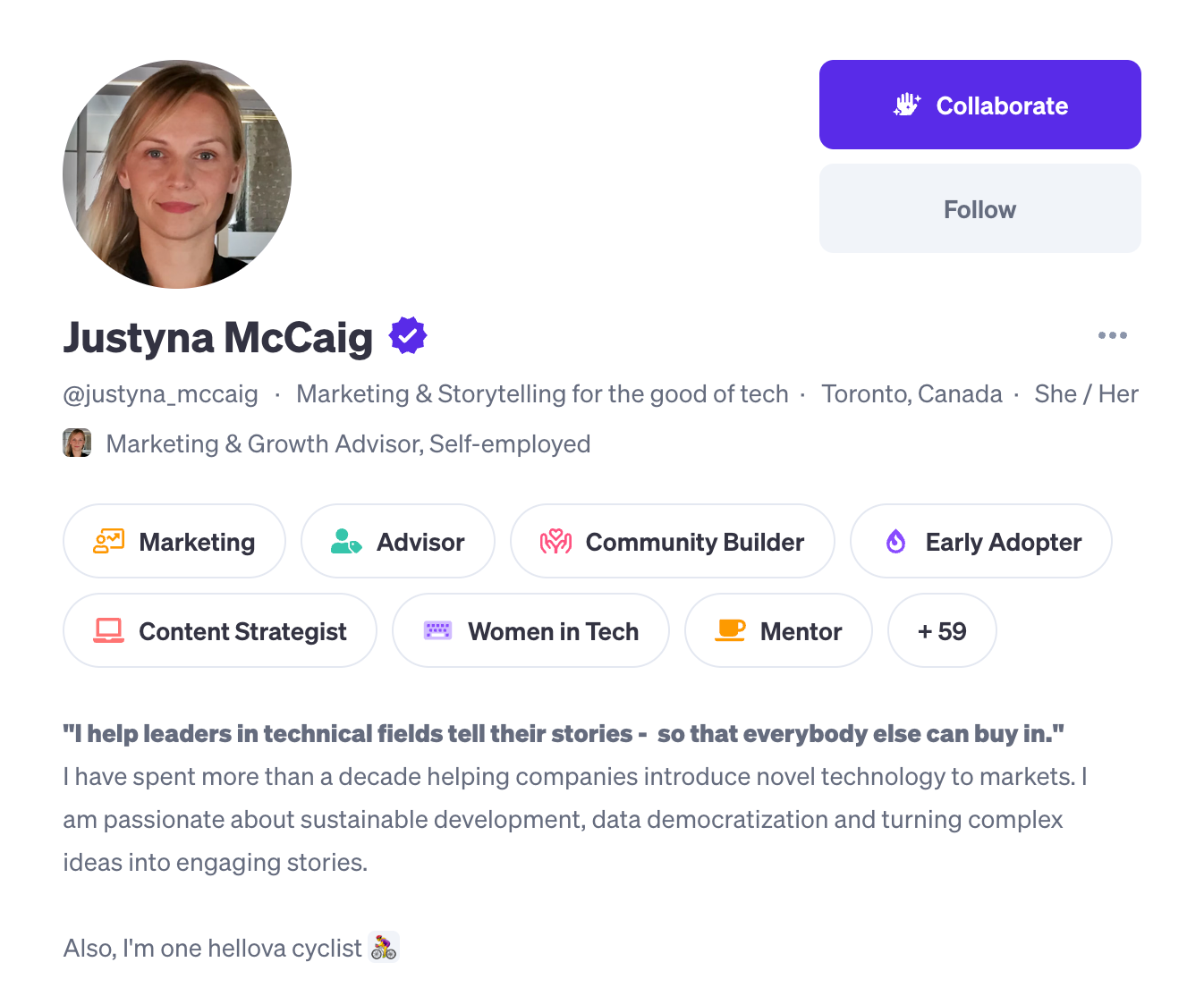
I [tagline description of the impact of your work]. I have spent [time in industry] helping [who] do [what]. I am passionate about [other topics you care about]. Also, I [hobby or side project you want to mention].



